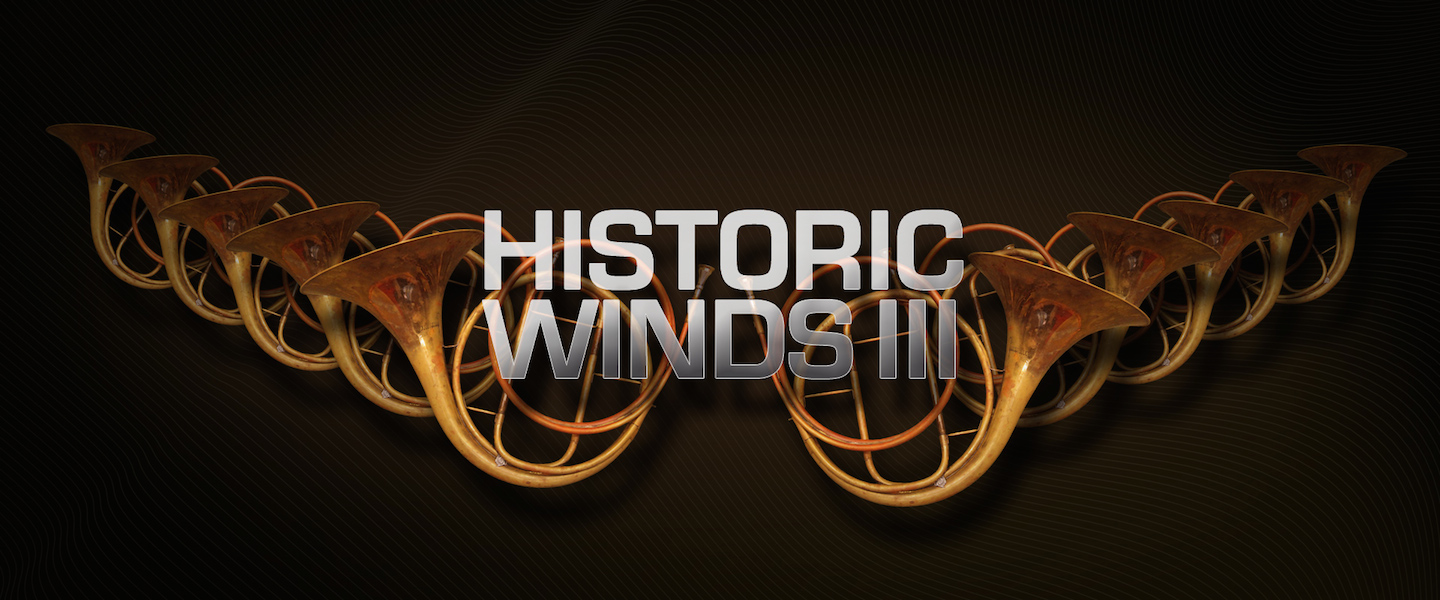
- The Fox Hunt
- Pastoral Suite - Horn in D
- Horn concerto no. 4 KV 447, rondo - Eb Horn
- Duet for Horns no. 4, polonaise - in D
- Duet for Horns no. 10, andante - in Bb-Basso
- Duet for Horns no. 12, allegro - in Eb
- Duet for Horns no. 12, allegro - in F
- Duet for Horns no. 12, allegro - in Bb-Alto
- Duet for Horns no. 12, allegro - in C-Basso
- Duet for Horns no. 4, polonaise - in C
- Duet for Horns no. 4, polonaise - in G
Open External Player
HISTORIC WINDS III
Vienna Instruments Collection
Calculating your price
Related Products
Authentic Performance Experience
The instruments of Historic Winds III are also available separately as SYNCHRON-ized Historic Winds Packs, re-edited, updated and optimized for the Vienna Synchron Player.
The natural horn is the predecessor to the modern French Horn and has neither finger holes nor valves. As a result, only natural tones according to the harmonic series can be produced by adjusting the embouchure and changing lip-tension. What’s more, the technique of stopping – the left hand is inserted in various depths and angles into the bell – allows for fine tuning the off-pitch tones and even producing chromatic notes that are not part of the harmonic series. In order to play (harmonic) scales in differing keys, various tuning slides have to be used. Early composers had to provide sufficient time for changing and inserting various tuning slides into the instruments when scales and keys changed in the music. So by the end of the 19th century, as music became increasingly chromatic, the natural horn was replaced by more advanced valved instruments. The natural horn imposes considerable demands on the player, especially when compared to the modern French horn, but the extra effort is rewarded by a unique and particularly noble sound. As a user of Historic Winds III, you’ll reap the benefits of the natural horn’s confident tone, without having to worry about the challenges of performance.
For Historic Winds III we’ve captured a natural horn with ten different tuning slides (Bb basso, Bb alto, C basso, C alto, D, Eb, E, F, G, A) for utmost flexibility. The soloist was Marcus Schmidinger who performed all of the horn instruments in our Brass I and Brass II Collections and also contributed to the Dimension Brass series. Apart from basic articulations and Performance Elements this Collection also provides crescendos and diminuendos with different durations, fast repetitions, and flutter tonguing.
| Library | |
|---|---|
| Sample Amount | 28,482 |
| Download File Size | 7.3 GB |
| Installed File Size | 12.7 GB |